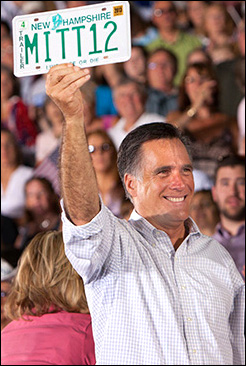Though we spend a great deal of time writing about and analyzing polls, it is important to remember that even though individual ballot test data is helpful and allows us to gauge campaign trends, the isolated individual polls themselves can be misleading. Today’s examples coming from Nevada and Ohio are a case in point. In both states, polls conducted during the same sampling period are producing considerably different results.
In Nevada, Public Policy Polling (Sept. 18-20; 501 likely Nevada voters) and Public Opinion Strategies (Sept. 19-20; 500 likely Nevada voters) can’t even agree on which Senatorial candidate is leading the race. A similar range conflict is found in the Ohio Senate race between Gravis Marketing (Sept. 21-22; 594 likely Ohio voters) and the Washington Post (Sept. 19-23; 759 likely Ohio voters), though the incumbent, Sen. Sherrod Brown (D), leads in both studies.
Looking at the Silver State, PPP projects Democrat Shelley Berkley to have a 48-44 percent lead over appointed Sen. Dean Heller (R). But POS is posting Heller to the opposite position, as they show the Senator topping Berkley 44-39 percent. Among the Buckeye State likely voters (the Washington Post poll provides separate results for their larger sampling universe of 934 registered voters and the whittled down cell segment of 759 likely voters), the WP Poll gives Sen. Brown a substantial 51-43 percent advantage, while Gravis sees only a one-point difference (Brown over state Treasurer Josh Mandel (R) 44-43 percent) between the two candidates.
Examining the aggregate for all four polls, the net swing in Nevada is D minus 7 points from PPP to POS, while both show the same level of support for Republican Heller (44%). Interestingly, the Gravis and Washington Post Ohio polls reveal a similar effect. While Democrat Brown swings seven points between the two surveys, Republican Mandel scores the same level of support in both, 43 percent.
The presidential numbers in both states also show similar divisions. PPP gives President Obama a 52-43 percent lead over Mitt Romney in Nevada, while POS shows the two candidates tied at 46 percent. In this case, PPP is six points higher for the Democratic candidate and three points lower for the Republican for a net swing of nine points. In Ohio, the Washington Post gives Mr. Obama a 52-44 percent edge among likely voters while Gravis Marketing projects only a one-point 45-44 percent margin in the President’s favor. Again, the two polls detect the same level of support for the Republican candidate, but vary rather substantially (once more, a difference of seven points) for the Democratic contender.
All four of these polls are live interview surveys, as compared to those using the Interactive Voice Response method, so these studies are all in the “apples to apples” comparison category. All are making their own unpublished determination as to what they define as a “likely voter.” The pollsters weight the responses to mirror the state’s population and voter registration and preference history but don’t reveal their particular weighting equations. And, clearly, this distinction is key in relation to the Democratic scale because the Republican numbers among these various studies remains constant, or virtually constant (GOP presidential number in Nevada is different).
What does this tell us? Again, looking beyond the original ballot test numbers, we are seeing clear variance, particularly on the Democratic side. This is more than likely the result of the particular pollster’s sample selection, weighting equation, and likely voter determination while, of course remembering that all polls are a mere snap shot in time of a very small group of people. This is why contrasting multiple polls to obtain a picture of a particular campaign is so important, because the comparison tells a much different story than looking at any one of these polls individually.
Throughout this election cycle, pollsters have been detecting an electorate that is inconsistent and can abruptly swing. The polls we compare today certainly continue to show such characteristics. This means, to a large extent, that we are flying blind into Election Day, and that the final determining factors either haven’t yet happened or are not fully cemented.






